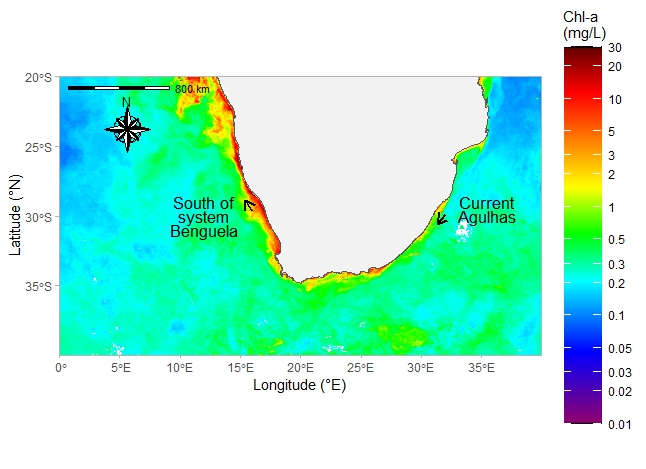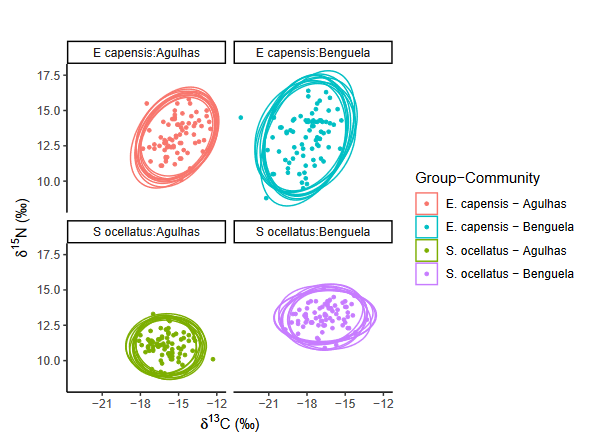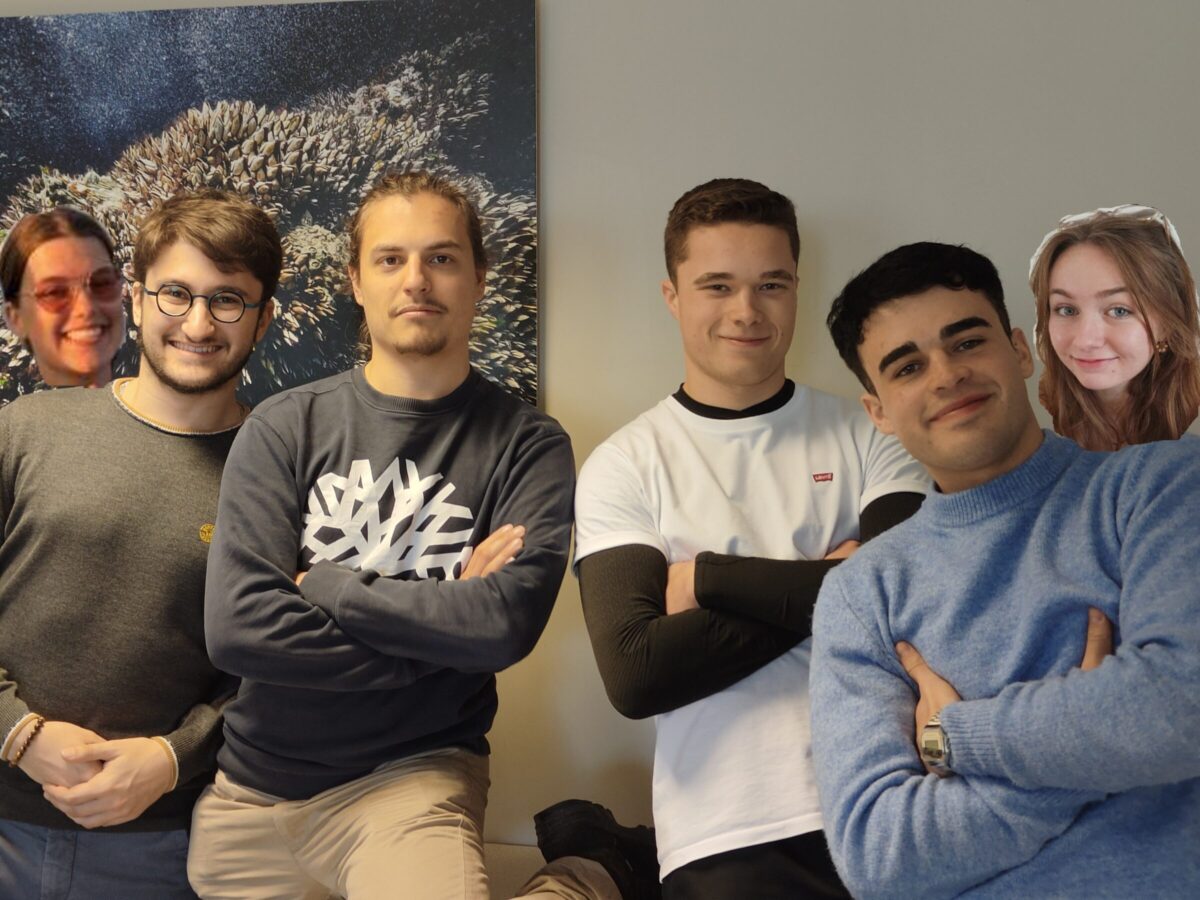Small pelagic fish in two contrasting ecosystems
South Africa’s famous « Sardine Run » happens each winter, influenced by the Southern Benguela system and the Agulhas Current.
Nutrient-rich waters from coastal upwelling in the Benguela system attract anchovies and sardines due to abundant phytoplankton. In contrast, the Agulhas Current’s warm, nutrient-poor waters support fewer species.
Context

Figure 1: Chlorophyll a concentration (August 2014) for the study area: South Africa, highlighting the Benguela and Agulhas currents.
South Africa’s renowned « Sardine Run » occurs annually during winter, influenced by the Southern Benguela system to the east and the Agulhas Current to the west. Coastal upwelling in the Benguela system enriches waters with nutrients, fostering phytoplankton growth, attracting species like anchovy and sardine. In contrast, the Agulhas Current, with its warm, nutrient-poor waters, supports less phytoplankton and attracts fewer species.
Description of the species
Anchovies and sardines, both from the Clupeidae family, form large schools for protection and reproduction in coastal waters. They have short life cycles, reaching sexual maturity quickly, and serve as crucial prey for marine predators, maintaining ecosystem balance. In South Africa, sardines undertake an annual migration called the « Sardine Run » along the east coast, associated with the cold Benguela currents. Anchovies, influenced by warm Agulhas currents, exhibit less predictable movements, forming smaller shoals with distinct commercial exploitation.
Results and Discussion

Figure 2. Isotopic distribution of sardines and anchovies
Anchovies (Engraulis capensis) have a more diversified trophic niche than sardines (Sardinops ocellatus), with a larger total ellipse area across all studied sites, indicating greater dietary flexibility. This difference is particularly pronounced in the Benguela current, where both species exhibit greater trophic diversity compared to their counterparts in the Agulhas current. In summary, the coastal upwelling in the Benguela current promotes greater trophic diversity for anchovies and sardines compared to the Agulhas current. In the Benguela current, both species feed at higher trophic levels than in Agulhas. The presence of the coastal upwelling results in more abundant and diversified resources at the base of the trophic network, explaining why these species feed on richer, higher energy trophic levels.
Conclusion
In conclusion, the link between coastal physical mechanisms and biological diversity is evident. Small pelagic fish species like the South African sardine and the Southern African anchovy exhibit distinct feeding habits depending on their location within the Benguela or Agulhas Current zones. Isotope analysis reveals significant differences: anchovies show more diverse trophic interactions in the Benguela system, while sardines consume a wider variety of species at higher trophic levels in this zone. Understanding these aspects is crucial for effective management of marine ecosystems.


 Attention, vous utilisez un navigateur peu sûr !
Attention, vous utilisez un navigateur peu sûr !